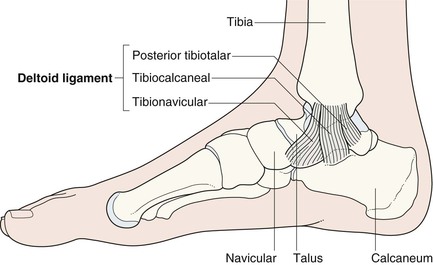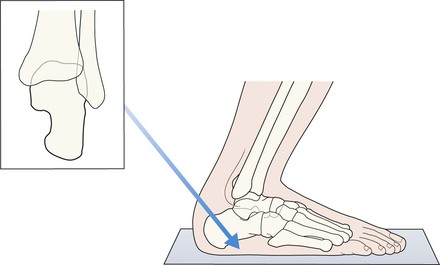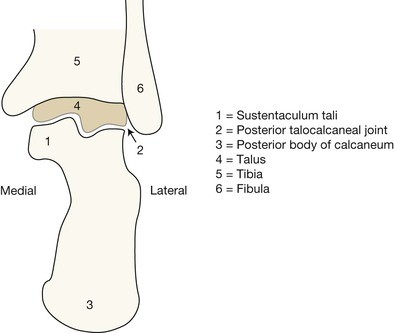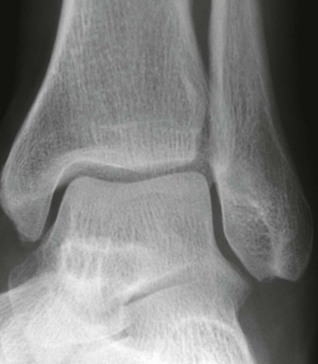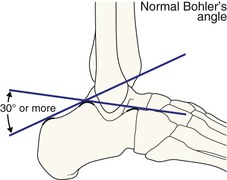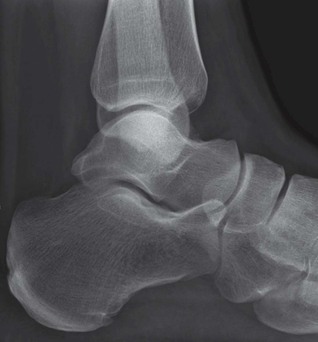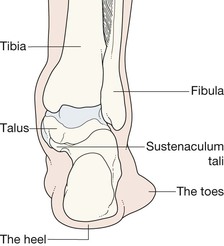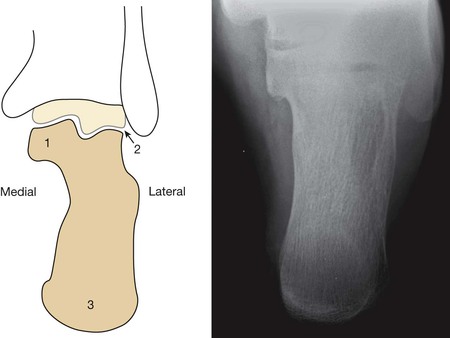Ankle & hindfoot
Normal anatomy
Lateral view—bones and joints
The lateral and medial malleoli can be identified. Helpful hints to aid identification:
The posterior lip (or tubercle) of the tibia, conventionally and inaccurately referred to as the posterior malleolus, is well shown.
The calcaneum and its sustentaculum tali are demonstrated. Bohler’s angle can be assessed for normality.
The base of the 5th metatarsal is often included.
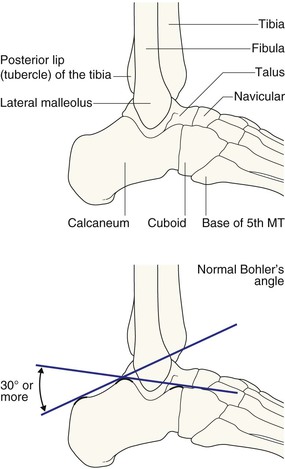
AP mortice
The mortice projection is obtained with slight (20°) internal rotation so that the fibula does not overlap the talus.
The joint space should be of uniform width all the way around. This space is well seen medially, it continues over the superior aspect of the dome of the talus, on to the lateral side of the joint.
The width of the joint space measures approximately 4 mm2.
The surface of the talar dome should be smooth, smooth, smooth. No irregularity, no notching, no defect.
The lateral process (also known as the lateral tubercle) of the talus is an important structure. The talocalcaneal ligament attaches to this part of the bone.
A useful rule: the bones of the tibia and fibula should always overlap on the mortice view. Any clear separation between these two bones should lead you to question whether the interosseous membrane is torn.

Analysis: the checklists1,3,4
AP mortice
Check the:
▪ Malleoli—fracture or … fractures?
▪ Tibiofibular interosseous membrane—any suggestion of a rupture?
□ If normal, the tibia and fibula should show some degree of overlap.
□ A measurement: the width of the space between the distal tibia and fibula at a point 1.0 cm proximal to the tibial articular surface should not exceed 6 mm5.
▪ Talus
□ Medial and lateral processes (ie the tubercles, p. 268)—any fragmentation?
▪ Joint width—does any part exceed the normal 4 mm3?
▪ Epiphyses and growth plates in children—normal? (see pp. 15 and 280).
Lateral view
Check the:
Common fractures/torn ligaments
The malleoli3,6
▪ The direction of the applied forces will determine the particular fracture (or fractures) and any associated ligamentous damage:

